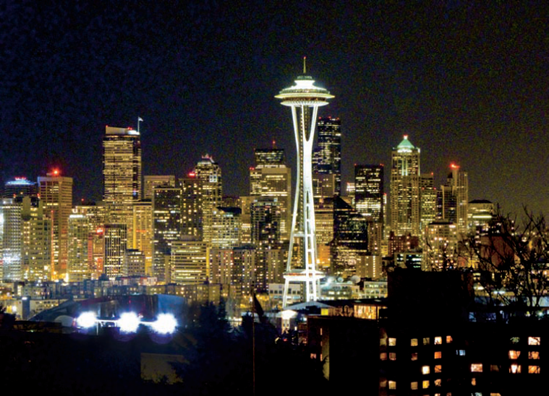Chapter 11. Night and Low-Light Photography
Just because the sun is setting and light is quickly fading does not mean you have to pack up your camera gear and stop shooting for the day. Actually, the fun is just beginning. This time opens up an exciting realm for creating low-light and nighttime photography. This chapter gives you the insights you need to make dazzling images in low or almost nonexistent light of a wide range of subjects and scenes. I also discuss several techniques for shooting special scenes such as firework displays and nightscapes, as well as tips for shooting High Dynamic Range and infrared photography.

The nighttime Seattle skyline was photographed handheld with a small camera from Queen Anne Hill. Even though I strongly recommend using a tripod and remote switch for shots like this, I didn't have them with me at the time and had to compensate with camera exposure controls. Exposure: ISO 1600, f/4.5, 1/1.7 second.
Preparation and Considerations
Many photographers who participate in my workshops and classes relate to me the classic story of attempting night and low-light photography a time or two, being displeased with the results, and giving up and moving on to other types of photo work. Their reasons for abandoning night photography vary. For some, the final images are not representational of the scenes they photographed. Others grow frustrated because they have ...
Get Lighting Digital Field Guide now with the O’Reilly learning platform.
O’Reilly members experience books, live events, courses curated by job role, and more from O’Reilly and nearly 200 top publishers.

